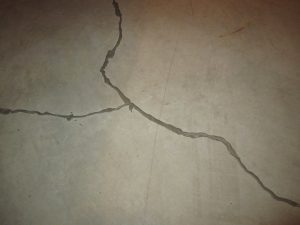Nova Scotia-wide doctor shortage has Steven Hall taking in new patients regularly

Some residents are wary of convicted felon Dr. Steven Hall, who opened a new practice in Sydney, N.S. However, with a doctor shortage in the area they have no choice but to seek his expertise.
A Cape Breton woman, who chooses to remain anonymous to protect her job, said she had to call when she found out Hall had openings.
“It’s out of desperation that I’m going there. If there was anything else I could do, I wouldn’t go. It comes down to a trust issue. I wouldn’t trust him knowing his past,” she said.
Hall was released from prison in January 2012 after being convicted for the May 29, 2009 accidental killing of his wife, Isabel Hall, originally from Sydney River, N.S. The incident happened while the couple were living in Kentucky.
His patient knew all about his record when she took the appointment, but did so anyway for her family’s health and well-being.
“I don’t think I should ethically or morally see him, but beggars can’t be choosers … He’s the only doctor in industrial Cape Breton taking patients.”
The appointment is less for her and more for her two children.
“What’s a mom to do? I can’t not have a doctor for my children. Someone put him there and gave him authority, and here I am with no doctor. If he wasn’t there I’d still have no doctor.
While some people are telling the patient she’s made a mistake, she’d given out the practice’s number to three people at the time of the interview.
“We need doctors down here that bad. Your first thought is ‘that is terrible,’ but your second thought is, ‘is he seeing new patients?’”
Hall returns to roots
Hall has been keeping a busy office since he started back last Monday. He said patients have been “extremely grateful” to see him.
“There’s such a high demand for doctors. There’s a waiting list of 1,000 people, but we have been able to give 500 appointments,” said Hall on Friday.
He said when the Chronicle Herald’s article came out, he was worried how the press would affect patients, but there was actually an increase in bookings.
“Today we had about 50 people call and want to be patients … A lot of people didn’t know that a doctor was available. We have so many people wanted doctors and they don’t care whether I’m a bank robber or whatever.”
Hall came back to Nova Scotia, where he originally went to university, because he wanted to be back with family and those close to him.
“I came to be closer to my wife’s family and her grave. She is buried here,” he said.
Hall comes back to Nova Scotia as the province sits in the midst of a serious doctor shortage.
The 2012 government report Shaping Our Physician Workforce said “while there is planning at the district level, there has been little province-wife planning to determine what types of doctors are needed where.”
In 2011-2012, Nova Scotia had fewer family doctors and more specialists than the national average.
“The current mix is 42 per cent family physicians to 58 per cent specialists, while the national mix is 50-55 per cent family physicians to 45-50 per cent specialists.”
Lorianne MacLean, the coordinator for physician recruitment at the Cape Breton District Health Authority, said in an emailed statement that 31 per cent of family physicians in the area will retire by 2020.
“Family physician shortages means that the demand for non-urgent care increases in emergency departments. This is a higher cost to the tax payer, and more importantly can lead to fragmented care for the person seeking care,” the statement said.
The statement said the health authority was working on “collaborative care models” with the province to fix the shortage. Hall was hired to replace a retired physician in Sydney.
“With respect to giving him credentials to work in the district, his record came into play. The College of Physicians and Surgeons of Nova Scotia conducted a comprehensive review of his case, and ruled he was eligible to practice in Nova Scotia under the condition of having a mentor,” the statement said.
He is working under a doctor at the Sydney Family Practice, but had to go through a year-long process of examinations by the board that grants the right to practice first.
The College of Physicians and Surgeons of Nova Scotia approved his application and did a two-day clinical competency examination, written and oral exams and a 13-hour psychiatric examination. The college didn’t return calls for comment on the exact procedures Hall had to go through.
Hall maintains his innocence, although five witnesses stated in trial they saw Hall accelerate his pontoon boat over his wife after she fell into the water on Herrington Lake, in Kentucky.
“(Tara) Silbersdorf testified that she watched Hall turn his boat toward Isabel and accelerate ten to twenty feet,” the Court of Appeal document stated.
Hall was sentenced August 16, 2010 for 2nd degree (accidental) manslaughter. His appeal was denied Oct 21, 2011, and remained in prison until January 2012, serving 36 months after he was sentenced. However, he was never released on bail between his arrest and the trial.
Doctor putting life back together
Hall is still devastated by the loss of his wife.
“Isabel was the love of my life. We were married 21 years, we never fought and we were both faithful to each other. Isabel’s loss is tremendous. She was the mother of my children,” said Hall.
Her sister, Susan MacVicar stated her family was “dealing privately with the matter.”
She called Isabel an amazing woman and said the family holds no ill will toward Hall for the incident that caused his wife’s death.
As for the meantime, Hall is looking forward and trying to put things back together.
“I’m trying to put the interests of my boys first. I have my medical career on track and I finally have the chance to be a productive citizen after doing nothing for four-and-a-half years.


